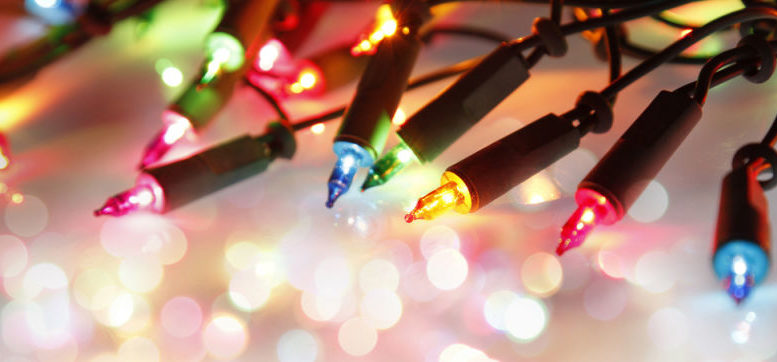If you’re like most people you’re thinking of using a bit more electricity this time of year. No matter what your belief system, you may be considering decorating the outside of your home and most likely your neighbors are as well. Everyone’s heard horror stories of fires caused by outdoor lighting, but what can you do?
Go LED
Probably the easiest thing you can do right now is to get rid of all your old holiday lighting and move to LEDs. LED lights in general use about 1/20th the amount of power for the same amount of lights, and not only that they are a purer, brighter color. LED lights have taken over the holiday lighting industry but there are still people out there rocking decades-old incandescent holiday lights that burn out easily and use tons of power. This is the time to look at new lights, especially if you’re going to “up your game” and try to do a little more lighting than you did last year.
Count watts.
Since you’re buying all new lights anyway you can figure out how much electricity you’re using. This is going to take a little work on your end but it’s not as hard as you think.
Most outlets are rated for 10 amp draw. (some are rated for 15 amps, but it’s hard to know for sure unless you put them in yourself.) If you draw more than 10 amps through them, they could fail. In the best case this means the outlet itself blows, in the worst case it means your house burns down. So this is nothing to laugh about.
The trick is knowing how much current you’re actually pulling. Some devices will put their current draw right on a power adapter, and some won’t tell you much. Some things will tell you volts and amps but that’s going to confuse you more than anything else. Here’s why.
When you’re talking about an outlet drawing 10 amps through it, you’re talking about 110 volts. Pretty much every power brick changes that to a much lower voltage, in order to provide more amperage. (I’ll explain all of that in another article.) So, really it’s not amps you need to count, it’s watts.
Watts are a pretty good way to measure actual power usage over time, and that’s why they’re used for light bulbs. Best of all, the formula for figuring out watts is deadly simple: multiply volts by amps.
If your phone charger puts out 2.1 amps and 5 volts, that’s 10.5 watts. And really, even though I told you the outlet is rated for 10 amps, that’s not what we’re really going to measure. Since the max draw on an outlet is 10 amps at 110 volts the real number we’re worried about is 1100 watts. If you’re trying to pull more than 1100 watts through that outlet, you’re in trouble.
So, since you’re getting new lights anyway, look at the box to see what the total current draw is. If it gives you volts and amps, multiply them to get watts.
Here’s the good news.
According to a site which seems to have all the answers, a string of 1,000 LED lights uses a mere 69 watts. The same string of old-school bulbs uses an astounding 600 watts. This means you can have about 17,000 LED lights plugged into a single outlet before you even worry about it. I’m not saying you should have 17,000 LED lights, but you could.
If somehow you have too many lights for a single outlet, you’ll have to look at your breaker box. Most home breakers are 15 amps and that covers multiple outlets. So you’ll need to find a different part of the house to plug the rest of the lights into. But if you think about it, the better thing to do is to go to LED lights where you can realistically put up more lights than any normal human should ever consider and still not worry about fire.
One more thing…
Since this is all going to be outside, use a surge protector with its own circuit breaker. Even if you don’t need the extra outlets, this is an extra added level of protection.
Also, put drip loops into your power lines so that any water that does come trickling down the line doesn’t go straight into the outlet.
With that… this weekend promises to be a busy one for millions of folks who want a more festive home, so take what you’ve learned, ditch those old incandescent bulbs, and go crazy!

